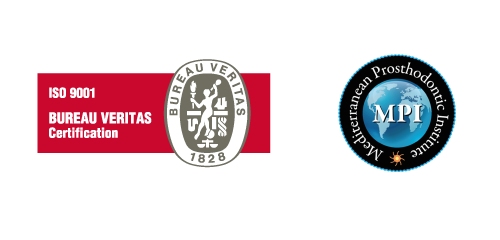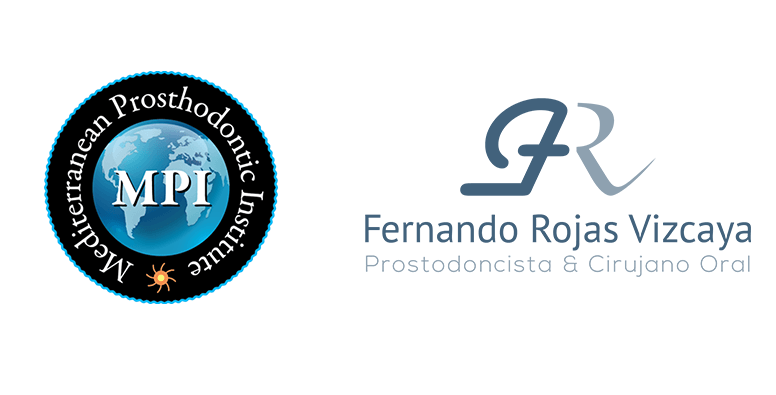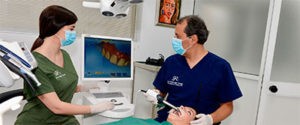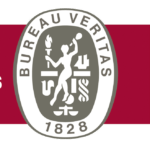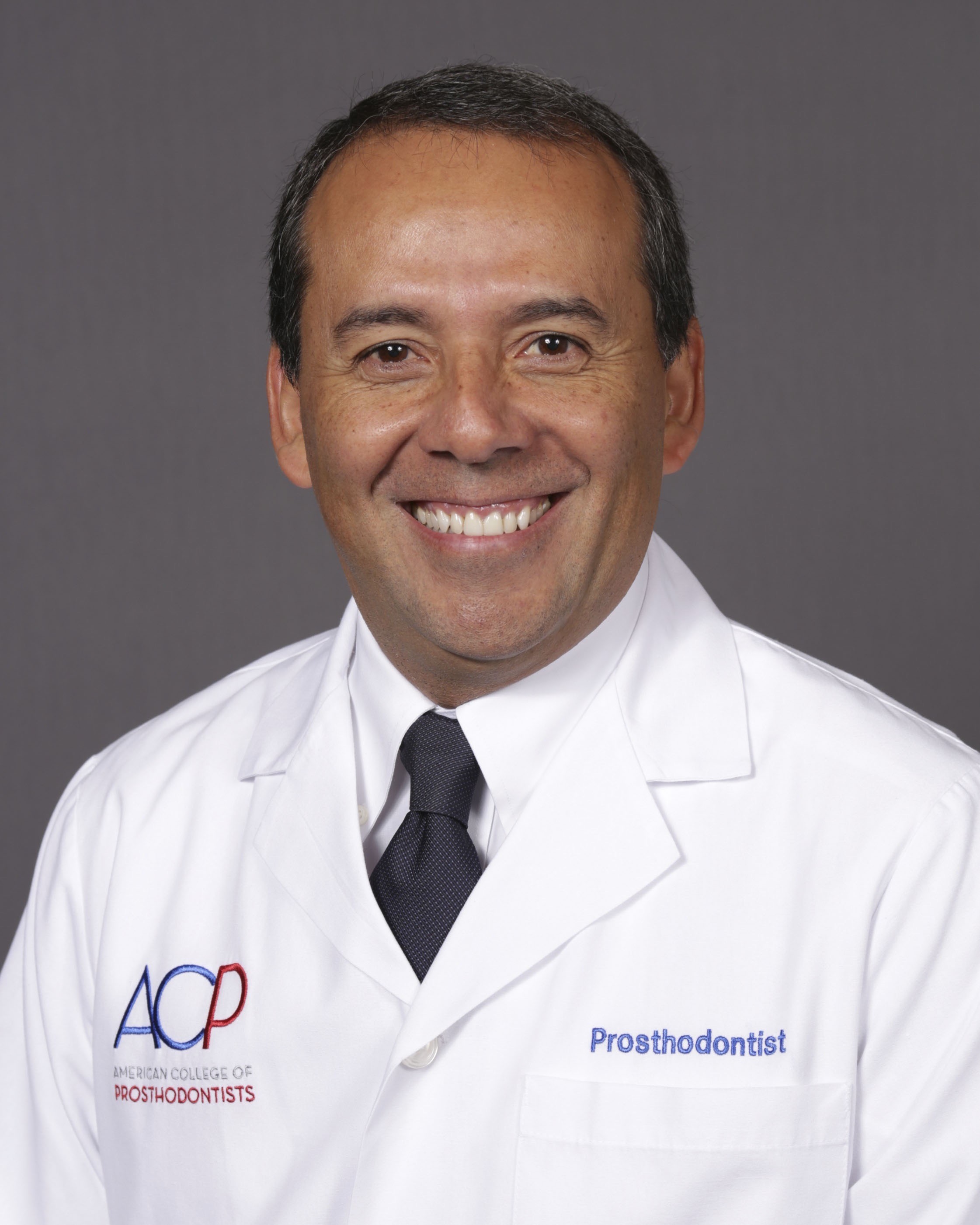
North Carolina University
FRV AUDITORY
Dr. Fernando Rojas-Vizcaya is Assistant Professor in the Department of Prosthodontics at the University of North Carolina at Chapel Hill, United States. In August 2011 he made a donation for the creation of an auditorium in the new building of the School of Dentistry of U.N.C. The auditorium is called “Dr. Fernando Rojas-Vizcaya “. The doctor teaches international courses and it is in this auditorium where he celebrates the graduation of his students. Especially his students of the “Implant Prosthodontics Program”.
SUMMARY PROFESSIONAL TRAJECTORY FERNANDO ROJAS-VIZCAYA DDS, MS.
Fernando Rojas-Vizcaya DDS, MS is a Prosthodontist graduated from the University of North Carolina (UNC), Chapel Hill, United States, where he completed a three-year full-time postgraduate in Prosthodontics and a one-year scientific research Fellowship in Dental Implants at the Department of Prosthodontics (2003-2006). He currently collaborates with UNC as an assistant professor.
He studied two other universities, Oral Medicine (1992-1993) and Oral Implantology (1994-1995) at the Complutense University of Madrid and a program of Oral Surgery (1993-1994) at the Gregorio Marañón University Hospital of Madrid. He graduated in Dentistry at the Universidad Javeriana in Bogotá, Colombia, which was homologated at the University of Barcelona, Spain in 1997.
He began his career as an international lecturer in 2006, which has led him to visit a large number of cities in different countries and give more than 490 lectures around the world teaching and divulging his techniques and knowledge in Prosthodontics and Oral Implantology fields.
His field of research and clinical practice are currently focused on the development of protocols in oral implantology, complete rehabilitations Monolithic Zirconia made and Virtual Patient Treatment (Virtual Implant Patient Protocol – VIP protocol) using new digital technologies. His articles have been published in prestigious American scientific journals such as the Journal of Prosthodontics and the Journal of Prosthetic Dentistry.
He is a member of the main international scientific societies in the area of Prosthodontics and Oral Implantogy, such as the American College of Prosthodontist (ACP), the Academy of Osseointegration (AO) and the International Academy for Digital Dental Medicine (IADDM). He is the director of the Academy of Osseointegration Charter Chapter of Spain. The AO is the North American academy recognized as the main international association of professionals of Oral Implantology.
He also maintains a private practice limited to Prosthodontics and Dental Implants treatments with the use of new digital technologies in Castellon.
He is the founder of the Mediterranean Institute of Prosthodontics, BoneModels and Dentalidea, three companies based in Castellon dedicated to innovation in the field of dentistry. In 2019 the group of companies that make up the Dr. Fernando Rojas-Vizcaya business group has achieved the ISO 9001: 2015 certification, an international quality seal that guarantees the commitment to excellence and quality in all its processes with a focus on the satisfaction of the client.

Minimizing the discrepancy between implant platform and alveolar bone for tilted implants with a sloped implant platform
Dr. Fernando Rojas-Vizcaya, Dr. Homa Zadeh
The Journal of Prosthetic Dentistry
junio de 2017
In a patient with edentulism, distally tilted implants with a novel sloped implant platform were used to minimize the discrepancy between the implant platform and alveolar bone crest and to restore complete-arch monolithic zirconia implant-supported fixed prostheses. (J Prosthet Dent 2017).
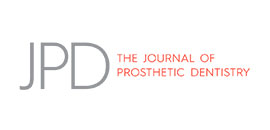
Prosthetically Guided Bone Sculpturing for a Maxillary Complete-Arch Implant-Supported Monolithic Zirconia Fixed Prosthesis Based on a Digital Smile Design: A clinical Report.
Rojas-Vizcaya, Fernando, DDS, MS
Journal of Prosthetic Dentistry
2017 February
A digital smile design was used to create an average smile and to develop a removable interim restoration for an edentulous patient with a high smile line and different bone levels in the maxilla. The interim restoration was used as a guide to perform bone sculpturing to create space for the biological width and to restore a monolithic zirconia implant-supported fixed restoration.
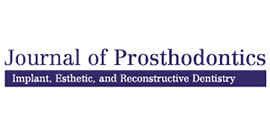
Retrospective 2- to 7-Year Follow-Up Study of 20 Double Full-Arch Implant-Supported Monolithic Zirconia Fixed Prostheses: Measurements and Recommendations for Optimal Design
Rojas-Vizcaya, Fernando, DDS, MS
Journal of Prosthodontics
2016 Aug 29. doi: 10.1111/jopr.12528
To measure the extension of cantilever lengths, thicknesses, and heights of zirconia prostheses in the lingual and facial areas of the distal screw access openings, and to evaluate the clinical performance regarding chipping or fracture of the distal cantilevered sections of double full-arch CAD/CAM screw-retained, stained, monolithic zirconia, gingival-colored ceramic implant-supported fixed prostheses (MZ-FPs).

Biological Aspects as a Rule for Single Implant Placement. The 3A-2B Rule: A Clinical Report
Rojas-Vizcaya, Fernando, DDS, MS
Journal of Prosthodontics
2013 Oct;22(7):575-80
For an implant restoration to be both esthetically and functionally successful, the prosthodontist must conduct a thorough treatment plan and complete a prosthesis design. The prosthodontist must carefully calculate the space needed for the restoration and soft tissue in the restoration process. The restoration and soft tissue are affected by the three-dimensional (3D) position of the implant, as the implant’s depth determines the ideal length of the crown. When determining the 3D position of the implant, the clinician must consider the biological aspects required to ensure the restoration’s biological integration with the patient’s hard and soft tissues. The restoration must be the first component considered in the treatment plan. In addition, the clinician must understand that the distance between the cervical contour (of the planned restoration) and the level of the bone will dictate how the surgical and prosthetic treatment plan is enacted. In this report, a novel Radiographic Biological Ruler© (with biological information) was used to help facilitate the treatment plan’s analysis.

Rehabilitation of the maxillary arch with implant-supported fixed restorations guided by the Most Apical Buccal Bone Level in the esthetic zone: a clinical report
Rojas-Vizcaya, Fernando, DDS, MS
The Journal of Prosthetic Dentistry
2012 April ;107(4):213-20
This article describes a prosthetically-driven protocol for the rehabilitation of the completely edentulous maxillary arch using immediate implant placement and loading techniques. After the incisal edges of the planned maxillary central incisors are determined, the most apical buccal bone level in the esthetic zone serves to guide complete arch rehabilitation.
AWARD: Judson C. Hickey Scientific Writing Award – The Journal of Prosthetic Dentistry
Award for Best Clinical Category:
The prize was awarded to Fernando Rojas-Vizcaya, DDS, MS, for the article entitled,
“Rehabilitation of the maxillary arch with implant-supported fixed restorations guided by the most apical buccal bone level in the esthetic zone: A clinical report,” published in the April 2012 issue

Full zirconia fixed detachable implant-retained restorations manufactured from monolithic zirconia: clinical report after two years in service
Rojas-Vizcaya, Fernando, DDS, MS
Journal of Prosthodontics
2011 Oct;20(7):570-6
The most frequently encountered problem with fixed detachable dental prostheses is loosening or fracture of the prosthetic screws. Other problems include wear, separation or fracture of the resin teeth from the metal/acrylic prosthesis, chipping or fracture of porcelain from the metal/ceramic or zirconia/ceramic prosthesis, and fracture of the framework in some free-end prostheses. For this type of prosthesis it is necessary to place the implants in a position that enables occlusal or lingual access so as not to impair the esthetics. This clinical report describes the restoration of a patient with complete fixed detachable maxillary and mandibular prostheses made of monolithic zirconia with angled dental implants with buccal access. The prostheses were esthetically pleasing, and no clinical complications have been reported after 2 years.
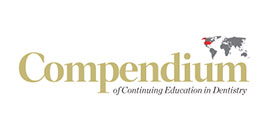
The Immediate Loading of Dental Implants
Lyndon Cooper, DDS, PhD, Ingeborg J. De Kok, DDS, Rojas-Vizcaya, Fernando, DDS, MS, Preeda Pungpapong, DDS, MS, Chang SH
Compendium of continuing education in dentistry
April 2007, Vol. 28, Issue 4
The aim of this article is to identify current opportunities for the immediate loading of endosseous dental implants. A biologic basis for the clinical parameters associated with success and failure of immediately loaded implants is presented, and select clinical situations where immediate loading is presently advocated will be illustrated. The wide-ranging applications of the immediate-loading concept for endosseous dental implants will be introduced; however, further experimental validation is necessary before incorporating all of these various expedited therapeutic approaches into practice.
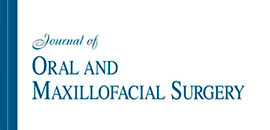
Immediate Fixed Restoration of the Edentulous Maxilla After Implant Placement
Lyndon Cooper, DDS, PhD, Ingeborg J. De Kok, DDS, MS, Glenn J. Reside, DMD, MS, Preeda Pungpapong, DDS, MS, Fernando Rojas-Vizcaya, DDS, MS
Jounal of Oral and Maxillofac Surgery
September 2005 Vol. 63, Issue 9, Supplement,Pages 97-100
Immediate loading of the edentulous maxilla is possible when sufficient bone is available to provide primary stability of implants located in positions congruent with an ideal prosthesis. Treatment planning, implant placement with immediate provisionalization, and final prosthodontic rehabilitation are best integrated by a process that uses the immediate provisional prosthesis as a surgical and restorative guide. Designating the planned tooth position is a prerequisite step to the identification of possible implant positions. The cervical contours of the planned prosthesis are critical determinants of this relationship. Defining the planned tooth/residual alveolar bone relationship aids in selecting both the possible type of prosthesis and implant locations. When the treatment plan is transferred directly from the tomographic template to the surgical template to the conversion prosthesis used for immediate loading, the surgical and prosthodontic management of this procedure is well defined.
TEACHING CURRICULUM
- Fernando Rojas-Vizcaya DDS, MS is an Assistant Professor in the Department of Prosthodontics at the University of North Carolina at Chapel Hill, United States.
- He is the Founder and Director of the Mediterranean Institute of Prosthodontics where he teaches advanced Prosthodontics and Implantology courses using new digital Technologies. Those courses are aimed at students from all over the World, who learn Dr. Rojas-Vizcaya’s published techniques and protocols.
- He has a private practice limited to dental Implantology and Prosthodontics in Castellon, Spain.
- He gives lectures at national and international level. He has given more than 490 lectures in more than 40 countries. Check his calendar here.
- Rojas-Vizcaya is an Assistant Professor at the University of Southern California, in Los Angeles, USA and at U.C.L. Eastman of London. He is also a consultant for several international publications.
- He is a member of the Scientific Board of “e-Dentico”, in Poland.
- Board Director at the International Academy of Implant Dentistry (IAID) in Asia.
- Examiner at the International Association of Orthodontists and Implantologists (iAOI).
ACADEMIC CURRICULUM
- Postdoctoral Scholarship in Implantology Research from the University of North Carolina at Chapel Hill, focusing on research, implant placement and bone regeneration (2005-2006)
- Graduated in Prosthodontics from the University of North Carolina at Chapel Hill (2003-2005)
- Degree in Dentistry at the University of Barcelona (1998). Approval of the title of Dentist.
- University Specialization in Osseointegrated Implant Surgery at the Complutense University of Madrid (1994-1995).
- Specialization in Oral Surgery at the Gregorio Marañon Hospital in Madrid (1993-1994).
- University Specialization in Oral Medicine at the Complutense University of Madrid (1992-1993).
- Residency in General Dentistry in the Department of Health of the Champagnat School of Bogotá, Colombia (1990-1991).
- Graduated as Doctor in Dentistry (DDS) in the Faculty of Dentistry of the Pontificia Universidad Javeriana in Bogota, Colombia (1985-1989).
BONEMODELS
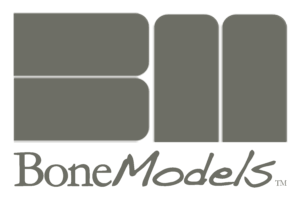
Realistic Customized Models for Dental Training Education
Diseñado por Fernando Rojas-Vizcaya, DDS, MS
https://bonemodels.es/
Dr. Fernando Rojas-Vizcaya is the CEO and founder of the company BoneModels, based in Castellon de la Plana, Spain.
BoneModels was born in 2011 as a result of a need to obtain realistic maxillary and mandibular models, that simulate the mouth of a patient. Those models were first planned to be used in the Mediterranean Institute of Prosthodontics by Dr. Rojas-Vizcaya himself and by the doctors who come to train with him in his institute. As he did not find any models with both quality and realism enough to be used in his courses, he himself -with his entrepreneurial disposition-, decided to create his own company of models and manufacture them with his own hands by applying all his knowledge.
In 2019, BoneModels and the group of companies that make up the Dr. Fernando Rojas-Vizcaya business group have achieved the ISO 9001: 2015 certification, an international quality seal that guarantees the commitment to excellence and quality in all its processes with a focus on customer satisfaction.
Also in 2019, the Chamber of Commerce of Castellon awarded the Export Prize in the category of best entrepreneurial company to BoneModels. This award recognizes the work of BoneModels in the field of internationalization since more than 80% of its manufacturing is distributed from Castellon to international markets.
The mission of BoneModels is to improve the quality of training, research and knowledge in the dental sector.
The vision is to be an international reference in anatomical models design and manufacture, Spain brand, similar to reality and customized through excellence.
The values of the firm are: similarity, customization, innovation and creativity, centrality in the client, as well as usability and ergonomics.
Currently, BoneModels models are used by prestigious professors and Key Opinion Leaders worldwide in the workshops of their courses and are present in most universities at national and international level adding value to dental training.
BoneModels distributes in more than 50 countries around the world.
DENTALIDEA
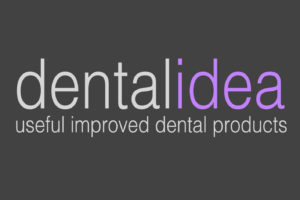
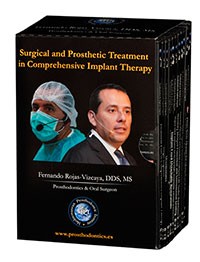
https://dentalidea.es/
Dr. Fernando Rojas-Vizcaya is the director and founder of the Dentalidea company, based in Castellon de la Plana, Spain.
The vision of Dentalidea is to be a recognized company, as a leader in the design and distribution of improved dental products, by its consumers, suppliers and stakeholders related to the company.
In 2019 the group of companies that make up the Dr. Fernando Rojas-Vizcaya business group, including the Dentalidea brand, have achieved the ISO 9001: 2015 certification an international quality seal that guarantees the commitment to excellence and quality in all its processes with a focus towards customer satisfaction.
Dentalidea was born from the innovative and entrepreneurial spirit of Dr. Rojas-Vizcaya and also as a result of the need to offer the highest quality in the photographs that he uses for his own publications and presentations.
After taking intraoral photographs, the doctor had to spend a lot of time editing them so that in the final image there was no instrument to interfere. In order to improve this process, appropriate studies were carried out to design mirrors, retractors and contrast devices that will improve intraoral photographs, offering a larger field of vision and a larger adjustment in the patient’s mouth to achieve a higher comfort and visibility.
Dentalidea has been increasing its line of products aimed at getting dentists to offer greater quality in their daily practice by reducing time and offering greater welfare to patients.
https://fernandorojasvizcaya.com/
WHAT IS PROSTHODONTICS?
“Prosthodontics is one of the nine dental specialties recognized by the American Dental Association, ADA. It is the branch that allows the dentist to treat diverse and complex dental problems and optimally restore function and aesthetics. This includes: sleeves, fixed bridges, complete dentures, removable partial dentures, dental implants, jaw joint problems, traumas in the structures of the mouth or teeth and also in oral or facial prostheses for patients who have had cancer.
Definition according to the American College of Prosthodontists:
www.prosthodontics.org
WHAT IS A PROSTHODONTIST?
A Prosthodontist is a dentist who, after completing five years of training as a dentist at the university, attends 3 more years of full-time university specialty, at a university with a prosthodontics program accredited by the American Dental Association, ADA.
A prosthodontist is a specialist who has been trained in the aesthetic restoration and replacement of teeth with dental implants or with another type of prosthesis. A Prosthodontist is the expert architect who can restore the function and optimal appearance to your smile. A Prosthodontist collaborates with general dentists, specialists, and other health professionals to achieve excellence.
WHEN TO VISIT?
When you have lost the aesthetics of your smile, the masticatory function if you are missing any teeth, several or all of your teeth, if you have had any trauma or illness and need an oral or facial prosthesis.
Visiting a prosthodontist is to put yourself in the hands of a highly qualified professional who has received advanced education and is prepared to return the function and aesthetics of your mouth and smile in an optimal way.
OUR PHILOSOPHY
We work with the objective of achieving excellence in each and every one of the treatments performed by Dr. Fernando Rojas-Vizcaya. We use new digital technologies such as intraoral scanner, face scanner and prostheses manufactured in Monolithic Zirconium designed with CAD / CAM. Our goal is to give the highest quality to each job to achieve the full satisfaction of our patients.
Mission
Being a reference in the treatment of patients who need specialized care directed by a prosthodontist through excellence.
View
Improving the quality of patient’s life through innovative and personalized treatments carried out with the highest qualification.
Values
Innovation: new products, new patient-oriented processes.
Personalized attention: each patient matters to us.
Quality: endorsed by scientific studies and publications.
Proximity: closeness to the patient.
